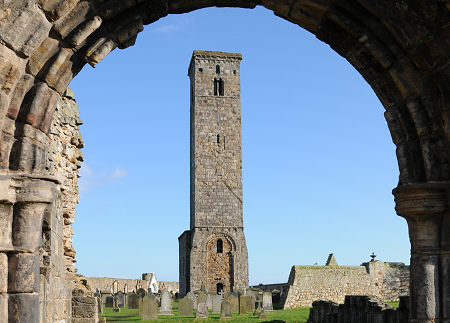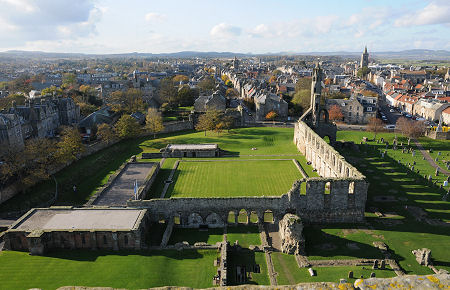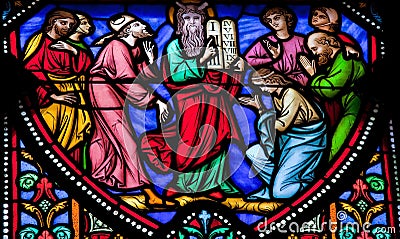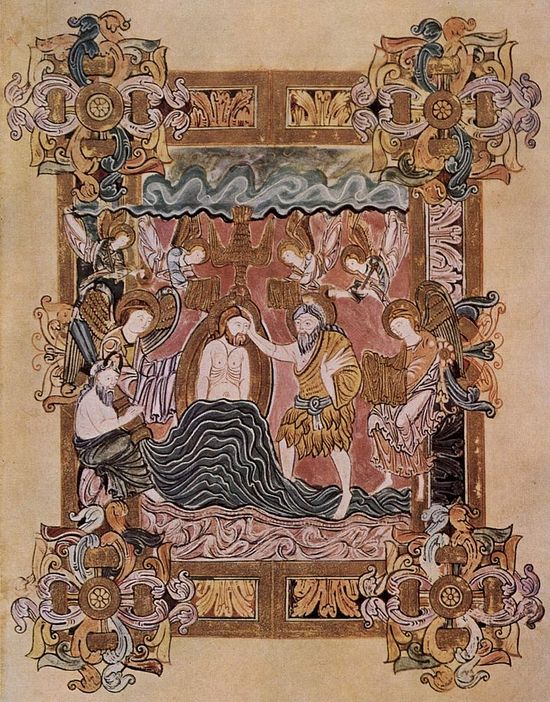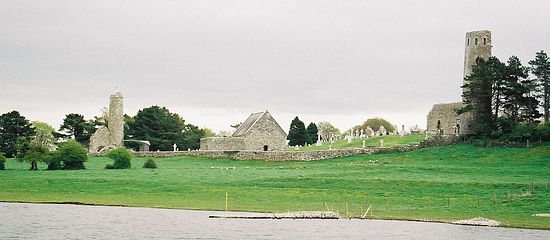If
one listens to evangelicals in the [u]nited States for very long, he will
eventually come across statements like this:
Our
Founding Fathers fashioned a republic to reflect "the laws of nature and
nature's God." From their wisdom – based on God's wisdom – America emerged
as the greatest nation in human history.
But
now in 2016, the heart of America
has become hardened to the things of God.
This
nation, founded upon a respect for Judeo-Christian views of man, nature, and
government, soon must regain that respect lest freedom give way to oppression,
and democratic ideals are trampled underfoot by tyrants. This has been the
pattern of history.
The
trouble is, most of this not true. America has not
got mainly Christian values at the heart of her political culture but
Enlightenment and Whig ideas and so forth.
Unexpectedly, three evangelicals themselves, Mark Noll, Nathan Hatch,
and George Marsden, in their book The
Search for Christian America (The Search for Christian America, Expanded
Edition, Colorado Springs, Helmers & Howard, 1989), do a good job of
setting the record straight. In this
particular passage from their book, they show rather plainly the heretical
route America
has taken, particularly in equating her own identity and destiny with that of
the Church:
American Christians were also especially
susceptible to the lure of legend-building because they inherited a heightened
religious interpretation of the nation’s founding. As we have seen in Chapter 2, early New
Englanders had determined that they were God’s chosen people because they had
such pure religion. By the time of the
American Revolution, however, many throughout the colonies were making
statements that America
was elect because of the heights of civil liberty that it had achieved. This is a significant shift, for it made it
possible to express secular purposes in religious terms, as Alan Heimert has
indicated:
In the years between the Stamp Act and the Revolution
the evangelical ministry often spoke in the phrases of Sam Adams—who in 1772
explained that the religion and public liberty of a people are so intimately
connected, their interests are interwoven and cannot exist separately. Not the least of the consequences of such a
blending of interests and issues was that elements of the Calvinist populace
were allowed to think that they were defending religion when in fact they were
doing battle for civil liberties.
. . . At the
time of the Revolution, the vision of America’s sacred destiny remained
intense but with an altered foundation.
Instead of motivating men to create a Christian society, it encouraged
them to bring about a revolution that would ensure the reign of civil liberty.
Between the American Revolution and 1800, the United States
underwent a major religious depression, probably the low ebb of religious
vitality in the nation’s history. Yet in
contrast to the downward state of religion, millennial expectancy during these
years rose to new heights. One minister
triumphantly proclaimed that the advancing kingdom had delivered “the deadly
shock to the last section of the Babylonian Image. . . . It trembles, it reels
to and fro, and threatens to fall.”
But how could ministers rejoice in the success of
the kingdom when their own churches lay devastated by the enemy? Their answer was that God, in their view, had
shifted his primary base of operations to the arena of nations. In the ringing success of the American
republic, they witnessed a model for the coming age: “No sooner had the twenty years of our
political operation built for us this political temple,” the same Presbyterian
went on in 1796, “than wisdom fell from God in respect to the millennial
temple.”
This transference of religious fervor to national
ideals became the heart of American civil religion. Christians began to suggest, as the
Congregationalist John Mellen did in 1797, “that the expansion of republican
forms of government will accompany that spreading of the gospel . . . which the
scripture prophecies represent as constituting the glory of the latter
days.” This shift greatly strengthened
the American republic, endowing it with a new sense of lofty purpose. The
nation rather than the church easily emerged as the primary agent of God’s
activity in history (italics added).
(pgs. 112-4)
Because
we have so many liberties, the American ‘fathers’ say, we must be blessed by
God above all other countries. And so
delusion becomes more deeply set in the souls of Americans:
. . . No less
persuaded of the hand of Providence
over the birth of the nation was George Bancroft, the best known historian of
Antebellum America. He judged the era of
the Revolution second in importance only to the birth of Christ. Of the Constitution Bancroft wrote, “The
members were awestruck at the results of their councils. . . . The Constitution
was a nobler work than any one of them had believed possible to achieve.”
Even those more directly concerned about
evangelism, missions, and the church joined the chorus that identified the
founding of the American republic as a signal event in redemptive history. “The millennium would commence in America,”
predicted the evangelical statesman Lyman Beecher, where “by the march of
revolution and civil liberty,” the way of the Lord is to be prepared. From this nation “shall the renovating power
go forth.” Only America could
provide the physical effort and pecuniary and moral power to evangelize the
world. “Our Heavenly Father,” said
William Williams in 1845, “has made us a national epistle to other lands.” Even the Presbyterian Charles Hodge, who
normally made a sharper distinction between the church and the nation, fell
into step with his countrymen when he wrote in 1829 that “if the Gospel is to
form our character and guide our power, we shall be a fountain of life to all
nations (pgs. 108-9).”
Such
theologizing leads America
to the point where she is now, that by virtue of her chosenness, she must have
preeminence in deciding world affairs, to such an extent that she must slay the
monster of tyranny, as she defines it, wherever she finds it in the world. And so anything remotely resembling a
patriarchal, hierarchical, traditional society, anything opposed to unnatural
equality and rule by the masses, must be stamped out for the sake of
‘constitutional values’ and such like:
Even more puzzling is someone like Alexander
Campbell, founder of the Disciples of Christ, who normally made short shrift of
anything historical. Campbell
dismissed the value of all the church’s past experience since the age of the
apostles—Protestant as well as Catholic.
All was entangled with Antichrist.
Like Jefferson, he thought no living
generation should bow before its predecessors.
The only history that did not draw his contempt was the “Ancient Order
of Things,” the purity and simplicity of the New Testament church.
Yet Campell’s distrust of history made room for one
other exception: the glorious events of
July 4, 1776. In 1830, he declared that
this was “a day to be remembered with the Jewish Passover.” . . .
On one such occasion [graduation day at Bethany College, West Virginia,
on 4 July--W.G.] he called upon his students to imitate the work of Washington,
Franklin, and Jefferson:
A more glorious work is reserved for this generation—a
work of as much great moment, compared with the Revolution of ’76 as
immortality is to the present span of human life—the emancipation of the human
mind from the shackles of superstition—to deliver them from the melancholy
thralldom of relentless systems. . . . This revolution, taken in all its
influences, will make men free indeed.
Somehow the work of the founding fathers had
escaped the corruption that had left its indelible stain upon two thousand
years of history. In Campell’s mind it
was precisely the Revolution which broken the tyrannical grip of custom (p.
109).
Sadly,
a part of the South has also been enamored with this idea of equating
republican/constitutional government with Christian progress (although,
thankfully, there is another strain of Southern thought opposed to this. Southerners have been woefully double-minded
in their relationship to revolutionary/Enlightenment politics). Someone who ought to have known better, the
Rev James Henley Thornwell, summed up this particular belief of Southerners as
well as anyone when he said,
We stand, indeed, in reference to free institutions
and the progress of civilization in the momentous capacity of the federal
representatives of the human race. . . .
The liberty of the world is at stake.
The American Congress is now deliberating upon the civil destinies of
mankind. . . . [T]he interests of
religion are deeply at stake. Here
Protestant Christianity is ascendant, and stretches its missionary arm across
the globe—we cannot interrupt this divine task with civil strife (James Farmer,
The Metaphysical Confederacy, 2nd ed., Macon, Ga., Mercer UP, 1999,
pgs. 248-9).
Significantly,
there are also these lines that seem to haunt the minds of so many Southerners
today:
Our glory is departed—the spell is broken—whenever
we become divided among ourselves (p. 248).
Everything
‘depends upon Union’ (p. 248).
It
is no great wonder, then, that so many Southerners no longer think about
leaving the Union. To take anything away from it, in their minds,
would lead to the same result as Old Testament Israel losing the Ark of the
Covenant: The Glory of God would depart
from them.
But
what they must realize is that this trend toward democracies and republics,
toward government of, by, and for the people, is not the will of God but of the
enemy of mankind, the devil. Now is a
good time to remember something posted here in March 2014:
.
. . About his preceptor, Fr. Seraphim wrote:
“Archbishop Averky’s view of the contemporary world was sober, precise,
and entirely inspired by the Sacred Scripture and Holy Fathers of the
Church: He taught that we live in the
age of the Apostasy, the falling away from true Christianity, when the ‘mystery
of iniquity’ has entered its final stage of preparation for the ‘man of sin,’
Antichrist.”
Like Fr. Seraphim, Archbishop Averky had made an
extensive study of the philosophical roots of the apostasy. As Fr. Seraphim noted: “Archbishop Averky traced the development of
this Apostasy in particular from the time of the schism of the Church of Rome
(1054), through the era of Humanism, the Renaissance and Reformation, the
French Revolution, nineteenth-century materialism and Communism, culminating in
the Russian Revolution of 1917, which removed the last great barrier to the working
of the mystery of iniquity and the coming of Antichrist.”
As we have seen, Archbishop Averky was in the
direct spiritual line of the nineteenth-century Russian prophet St. Theophan
the Recluse, whose prophecies—like those of his contemporary St. Ignatius
Brianchaninov—he saw unmistakably being fulfilled around him. St. Theophan had prophesied the fall of the
Orthodox Tsar and its terrible aftermath, which he said must come as a
punishment for the faithlessness, freethinking, amorality, and blasphemy among
his countrymen. “When royal authority falls,” Theophan had said, “and the people
everywhere institute self-government (republics, democracies), then there will
be room for the Antichrist to act. It
will not be hard for Satan to prepare voices in favor of renouncing Christ, as
experience showed during the French Revolution.
There will be no one to pronounce the authoritative veto. And so when such regimes, suitable for disclosing
the Antichrist’s aspirations, are instituted everywhere, then the Antichrist
will appear.”
This was exactly what Archbishop
Averky saw happening in the contemporary world.
“The fundamental task of the servants of the coming Antichrist,” he
wrote, “is to destroy the old world with its former concepts and ‘prejudices,’
in order to build in its place a new world suitable for receiving its
approaching ‘new owner,’ who will take the place of Christ for people and give
them on earth that which Christ did not give them.” In the words of St. Ignatius Brianchaninov,
“The Antichrist will be the logical, just, and natural result of the general
moral and spiritual direction of mankind.”
Like
his beloved St. John of Kronstadt, Archbishop Averky found that the most
difficult thing to endure as an Orthodox pastor was to witness the apparent triumph of evil in the world. He saw Christians of all different
denominations “keeping step with the times,” unconsciously collaborating with
the servants of the coming Antichrist by preaching humanistic, chiliastic ideas
of “world progress” and earthly blessedness—ideas which appear motivated by
“Christian love,” but which are in reality profoundly foreign to true
Christianity. “Bearing one’s cross is
the natural way of every true Christian,” Archbishop Averky affirmed, “without
which there is no Christianity.”
Archbishop
Averky was especially wounded at heart when he saw Orthodox leaders trying to
keep up with these apostate trends for the sake of “ecumenical” progress, thus
contributing to the “new Christianity” of the Antichrist—a “Christianity without
the Cross” (Hieromonk Damascene, Father
Seraphim Rose: His Life and Works, 3rd ed., Platina, Ca.: St. Herman of
Alaska Brotherhood, 2010, pgs. 734-5, bold emphasis added).
But
what do we find in evangelical communities today? A call to pray for the return of God’s
anointed in Russia? Or, closer to home, for Christian kings in
the States, or one in Washington
City? No.
Evangelical pastors overwhelmingly believe voting
is a Christian duty. Almost all (94%) say American Christians have a biblical
responsibility to vote. That includes pastors of all denominational
stripes—from Pentecostal (98%) and Baptist pastors (95%) to
Presbyterian/Reformed pastors (81%) and Church of Christ
ministers (79%).
Voting
- making one’s voice heard, forcing one’s will on another - is not a very
Christian act. Silent obedience,
humility, cutting off one’s will for the sake of another - these are Christian
virtues. There are other ways to do good
for society than participating in a system that overwhelmingly puts into the
seats of government power those loyal to the globalist banksters and other transnational
corporate interests (Monsanto, GE, etc.)
But the longer Southerners and all Americans continue to treat the u. S.
Constitution as though it were holy writ like the Ten Commandments;
the
longer they continue to view America as the only nation able to receive God’s
Grace and to dispense it to the other nations of the world in the form of paper
constitutions, bills of rights, privately owned central banks, military bases,
etc.; the longer they will continue on
in their political, spiritual, and cultural death spiral.
The
world will be quite alright if America
isn’t there to oversee its affairs. It
would probably be better off, in fact.
So instead of wasting time and energy fighting about Trump or Clinton,
Supreme Court nominees, and all the rest of it, let Southerners, Midwesterners,
Alaskans, Puerto Ricans, etc. start planning on how they can all peacefully go
their own separate ways, building traditional Orthodox Christian societies as
best they can within their new borders, and allying themselves with countries
like Russia and Hungary who are in the vanguard of opposing the satanic New
World Order, which would likely be hampered for a time without the resources of
almighty Washington City at their beck and call.
May
God grant the u. S., if it is pleasing to Him, a future that looks something
like this:
--
Holy
Ælfred the Great, King of England, South Patron, pray for us sinners at the
South!
Anathema
to the Union!
